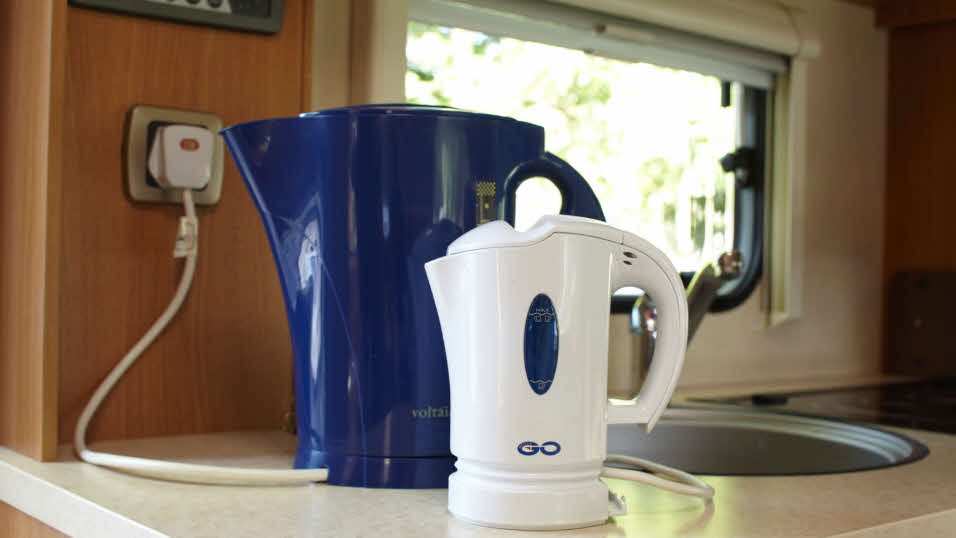Battery choice and use
The battery you’ll find under the bonnet of your car is designed to supply a high current for a short period to start the car engine but it isn’t suitable for powering a touring caravan’s electric services.
Leisure batteries are designed to supply currents of a few amps for longer periods and to be discharged and recharged many times. Battery life is enhanced if it is kept well-charged, so the use of a suitable charger is advisable if a mains hook-up is available.
After a period of discharge, the battery should be recharged as soon as practical, being left in a discharged state will reduce its life. During prolonged periods of idleness, eg in winter when storing your caravan, it should be given a top-up charge every six to eight weeks. In order to ensure that it is properly charged, but not over-charged, an 'automatic' or 'voltage controlled' battery charger specifically designed for leisure batteries should be used.
When not in use, unless it is required to power a security device, disconnect the battery from the caravan, as many modern caravans contain devices which may draw a small but appreciable amount of power and which will, over time, flatten the battery. Avoid leaving a battery on charge for long periods over the winter, unless the charger is specifically designed with a ‘trickle charge’ facility.
Battery capacity is quoted in ampere-hours (Ah). The size of battery needed can be estimated from a combination of the length of time that the caravan will be in use between chargings, the amount of equipment in use and the length of time that equipment is switched on.
A water pump may take several amps, but it is usually only working for a few seconds at a time. Old style light bulbs, watching television in your caravan, and any appliances that produce heat such hair dryers will use a lot of power and drain the battery more quickly. Modern LED lights – especially for winter caravanning, when the lights are typically on for longer periods – can significantly reduce demand on the battery.
The following table gives specimen figures for the consumption of typical appliances found in a caravan. While this is only one possible example, and your usage may vary significantly from this, it does suggest that a battery of 60Ah capacity is the minimum size required.
| APPLIANCE | Watts | Amps | No | Use in hours | Ah |
|---|
| Fluorescent Light |
13 |
1.1 |
3 |
4 |
13.2 |
| Spot Light |
5 |
0.4 |
2 |
2 |
1.6 |
| LEDLight |
2 |
0.1 |
4 |
5 |
0.8 |
| Pump |
|
7.0 |
1 |
1 |
7.0 |
| Toilet Pump |
1.2 |
5.0 |
1 |
0.5 |
2.5 |
| Water Heater |
|
0.1 |
1 |
12 |
1.2 |
| Space Heater Fan |
|
1.0 |
1 |
9 |
9.0 |
| TV |
|
8.0 |
1 |
3 |
24. |
| TOTAL |
59.3 |
Battery size and weight increases with capacity - with a 70Ah size weighing typically about 19kg. Since this must be included as part of the caravan’s payload, a compromise between capacity and weight may be necessary. Battery capacity tends to diminish with age and usage so it pays to choose a high capacity battery with a good power-to-weight ratio.
Battery installation
While charging, a battery may give off a small amount of gas and if overcharged, it could give off an explosive mixture of hydrogen and oxygen. This is why the battery needs to be mounted in an acid-resistant box which is ventilated to the exterior of the caravan.
Overcurrent protection devices (fuses, circuit breakers) must not be installed in the battery compartment (nor in the gas bottle locker).
Older caravans may have the battery positioned on the floor in a cupboard or bed locker, without any sealed separation from the living area, which are less safe than modern sealed ones and a separate battery locker can be installed to improve them.


